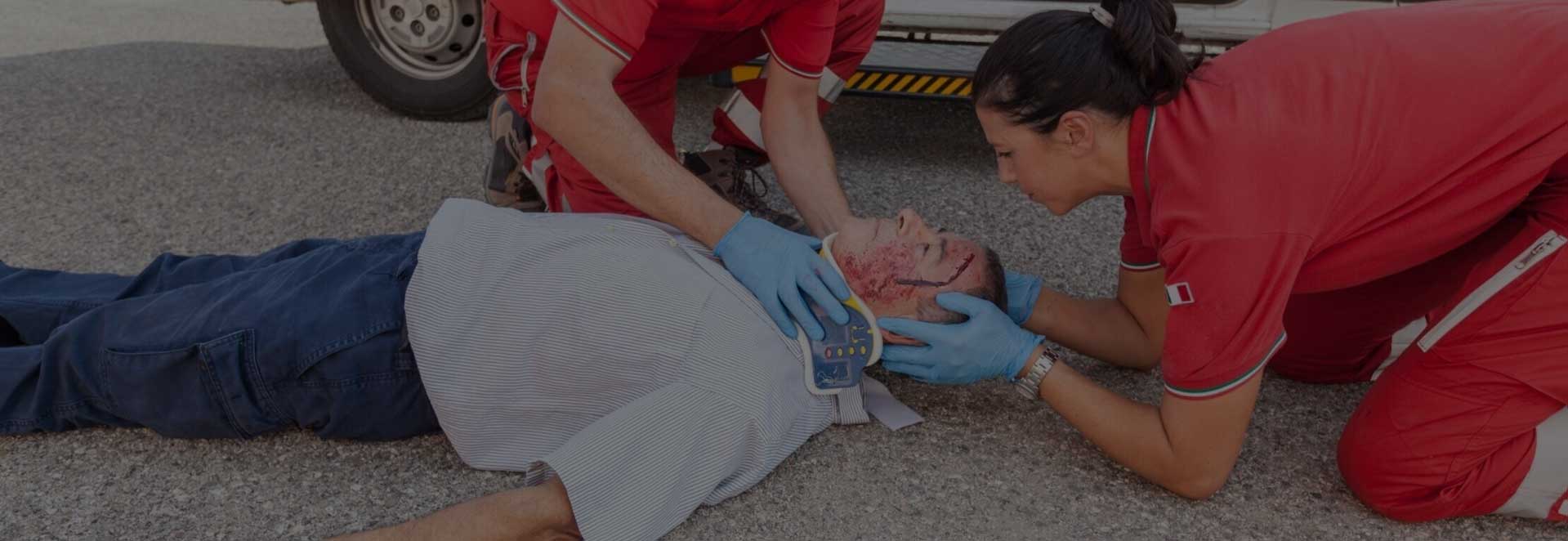Overview
This unit of competency, basic life support training, describes the skills and knowledge required to recognise and respond to life-threatening emergencies in line with the Australian Resuscitation Council (ARC) Guidelines.
This unit applies to all workers who may be required to provide basic emergency life support and response in a range of situations, including community and workplace settings.
Duration
6 hours of face to face training.
Pre-requisites
There are no pre-requisites.
Outcomes
On successful completion, participants will receive a nationally recognised statement of attainment in HLTAID002 Provide basic emergency life support, valid for three (3) years from the completion date.
The Code of Practice and Australian Resuscitation Council recommends that cardiopulmonary resuscitation skills are refreshed annually.
Entry Requirements
Students must have the physical ability to provide resuscitation by kneeling on the floor and performing two (2) minutes of uninterrupted CPR on an adult and infant manikin.
Learner Support and Reasonable Adjustment
If you have a learning difficulty or any special needs or support requirements please contact us prior to enrolment. This may include but not limited to language, literacy and numeracy skills or disabilities.
It’s important to note that there is a physical requirement to complete 2 minutes of uninterrupted CPR on the floor with a manikin.
Recognition of Prior Learning
Recognition of prior learning is available to those who can provide other evidence that they can demonstrate the skills, knowledge, and experience described by the unit.
There is a currency requirement to be able to demonstrate skills such as CPR.
Unique Student Identifier (USI)
Every student requires a Unique Student Identifier (USI) to obtain a certificate or qualification from their registered training organisation when studying a nationally recognised training course in Australia.
A USI gives you access to an online account which keeps all your training records together, even if you move locations, change training organisations or undertake studies at different times in your life.
For more information ask your training organisation or visit www.usi.gov.au.
Choosing a Training or Education Provider
The Australian Skills Quality Authority (ASQA) has developed a fact sheet to allow you to be fully informed about your decision to enroll in a course of study.
We recommend reading this information prior to enrolling.
ASSESSMENT – THEORY – Multiple choice question paper
You will be assessed on:
State/Territory regulations, first aid codes of practice and workplace procedures:
ARC Guidelines relevant to the provision of CPR
Safe work practices to minimise risks and potential hazards
Infection control principles and procedures, including use of standard precautions
Requirements for currency of skill and knowledge
Legal, workplace and community considerations:
Awareness of potential need for stress-management techniques and available support following an emergency situation
Duty of care requirements and respectful behaviour towards a casualty
Own skill, limitations, consent, privacy and confidentiality requirements
Importance of debriefing
Principle and procedures for first aid management of the following scenarios:
Allergic reaction and Anaphylaxis
Bleeding control and shock
Cardiac conditions, including chest pains
Choking and airway obstruction
Respiratory distress, including asthma
Stroke
Considerations when providing CPR:
Airway obstruction due to body position
Appropriate duration and cessation of CPR
Appropriate use of an AED including chain of survival
Standard precautions
Basic anatomy and physiology:
Considerations in provision of first aid for specified conditions
Chest
How to recognize a person is not breathing normally
Response/consciousness
Upper airway and effect of positional change
ASSESSMENT – PRACTICAL – Physical demonstrations (skills)
The simulated assessment environments will reflect the real-life working environment where these skills and knowledge would be performed, with all the relevant equipment and resources of that working environment. Skills must be demonstrated by the student working individually in an environment that provides realistic in-depth, industry-validated scenarios and simulations to assess students’ skills and knowledge.
It’s important that students have knowledge of the content of this course. The assessable practical skills are listed below.
You will be assessed on performing first aid scenario and task demonstrations for:
Infant CPR
Adult CPR & defibrillation
Recovery position
Verbal reporting, debriefing and evaluating
Anaphylaxis & autoinjector
Asthma & medication
Choking
Bleeding control & shock
Course Resources
The following learning resources are provided to participants in this course.
Adult and infant resuscitation manikins
AED training device
Adrenaline autoinjector training device
Placebo bronchodilator and spacer device
Roller and triangular bandages
Workplace first aid kit
Workplace injury, trauma and/or illness record, and/or other appropriate workplace incident report form



